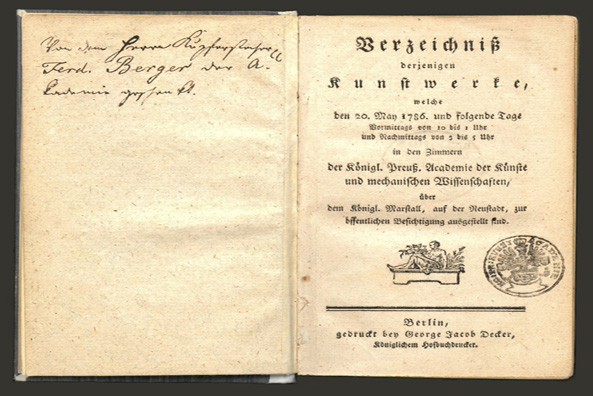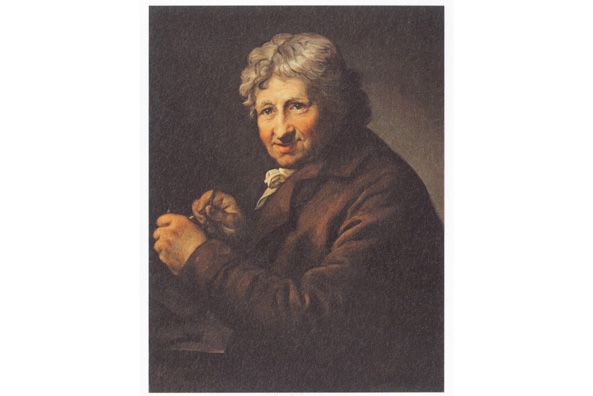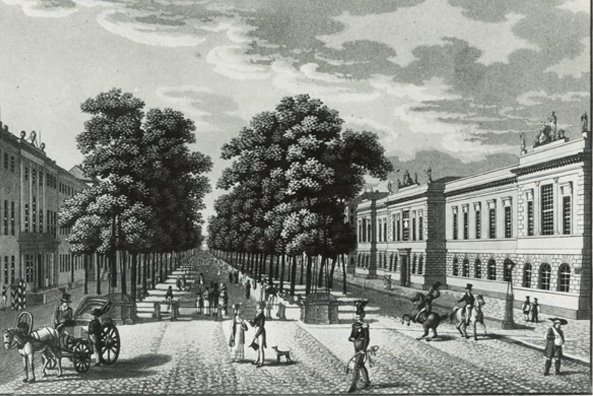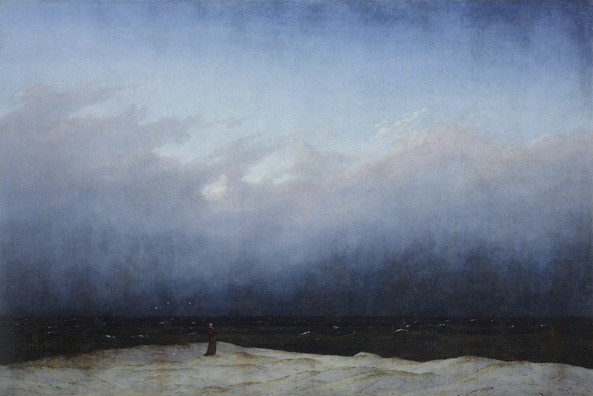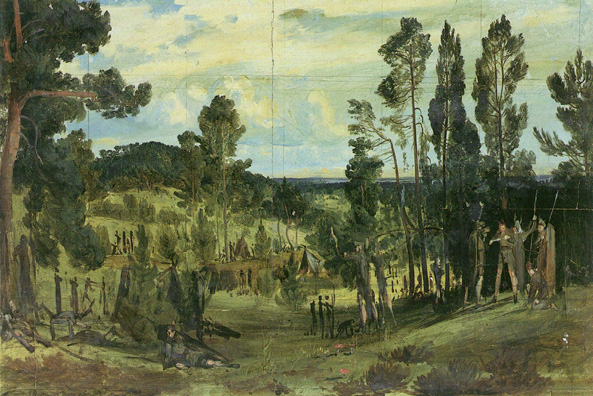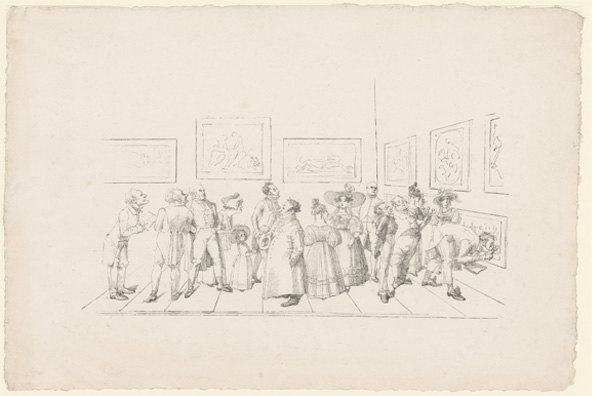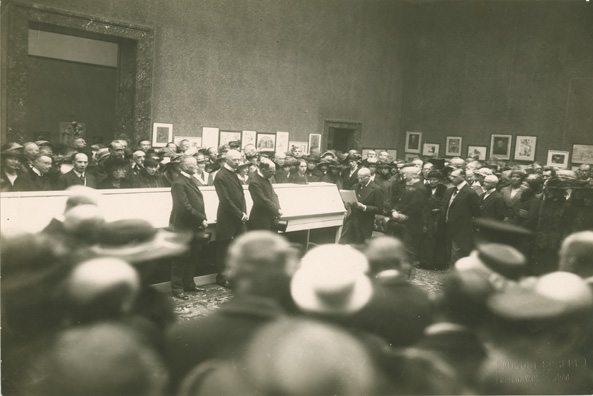20.5.2021, 09 Uhr
“Each spectator pays 8 groschen at the door, the ladies don’t pay anything.”
The first exhibition of the Berlin Academy of Arts in 1786
© Akademie der Künste
“The Royal Prussian Academy of Arts and Mechanical Sciences will begin its public exhibitions of artworks on the 20th of this month”, reads an announcement of May 1786 published in Berlin’s newspapers. The price of the printed catalogue, which also served as the admission ticket, followed a suggestion of the dean at the time, Daniel Chodowiecki: “Each spectator pays 8 groschen at the door, the ladies don’t pay anything.”
Organising regular exhibitions was one of the significant advancements adopted in the course of the Academy’s reform at the end of the 18th century, at the initiative of Daniel Chodowiecki and state minister Anton von Heinitz. Following the example of the Paris and Dresden artists’ societies, these exhibitions were intended to promote the general interest in art in Prussia and contribute to the “spread of good taste”.
While the Paris salons were reserved for the works of their members, a more democratic spirit prevailed in the exhibitions in Berlin. Here, all interested artists, whether local or foreign, had the opportunity to publicly present their works and offer them for sale. This encouraged the participation of a broad spectrum of artists, ranging from Academy students to so-called amateurs to renowned artists. The majority of works consisted of painting, graphic arts and sculpture. During the course of the 19th century, the concept of the sales exhibition contributed to the development of a Berlin art market, which was of particular benefit to artists who did not enjoy support through scholarships or commissions. The artist Carl Blechen, for example, managed to raise the necessary funds for his desired trip to Italy using the proceeds from the sale of his painting Das Semnonenlager (Camp of the Semnones), now lost, which was exhibited in 1828.
In contrast to Dresden, the Academy in Berlin published printed catalogues from the start. The publications, which nowadays are considered a rarity, contain precise information on the participating artists and the works they exhibited; the prefaces to the catalogues inform the reader about academic events, new acquisitions for the Academy’s collection as well as new members and laureates. For this reason, the catalogues are a valuable source of information for art historical research.
The exhibitions of the Berlin Art Academy, which took place every one to two years between 1786 and 1943, became quite a public attraction during the first half of the 19th century. As a social meeting place, they provided the emerging bourgeoisie with an open and critical forum where artists, art connoisseurs and interested laymen could engage in direct exchange and dialogue. With a few exceptions, the exhibitions focussed on contemporary art and were thus a reflection of current trends. In 1810, two large-format works by Caspar David Friedrich were exhibited for the first time in Berlin; this caused a sensation and prompted Heinrich von Kleist to write a famous review in the Berliner Abendblätter. The exhibited paintings, Der Mönch am Meer (The Monk by the Sea) and Abtei im Eichenwald (Abbey in the Oak Forest), were purchased by King Friedrich Wilhelm III and are now displayed in the Alte Nationalgalerie in Berlin.
Over the years, the number of participating artists and exhibited works increased sharply. While in 1786 only 332 works were displayed in just three rooms, by the 1820s the show already filled the entire wing of the first floor of the old Academy building on Unter den Linden. For the 1836 exhibition, the magazine Museum registered a record number of 111,954 visitors who squeezed their way past 1,683 artworks. Within only 50 years, the exhibitions of the Academy had become an “event” with a very contemporary appeal for audiences, “where everyone rushes in to enjoy, if not the art itself, then at least the throngs of people.” (Heinrich Gentz)
In the second half of the 19th century, the role of the academic exhibitions as a forum for current developments began to wane. The growing influence of the art associations increasingly brought social and economic factors to the forefront. While in the 1830s artistic innovation was still one of the selection criteria, from 1875 the annual presentations were turning into mass events that reflected the conservative tastes of audiences but left no room for innovative trends. By the end of the 19th century, the artistic avant-garde was developing outside of the Academy. A new beginning only came about during the presidency of Max Liebermann after the First World War. As a co-founder of the Berlin Secession, he supported the integration of modern artists into the institution and the establishment of more stringent quality standards for the artworks displayed.
Uta Simmons
